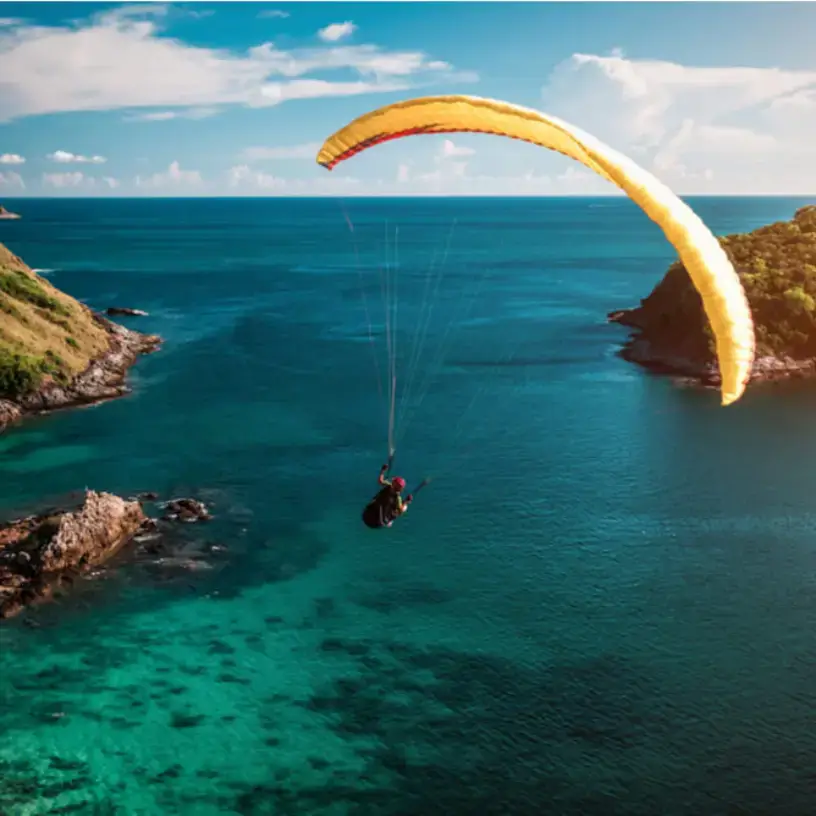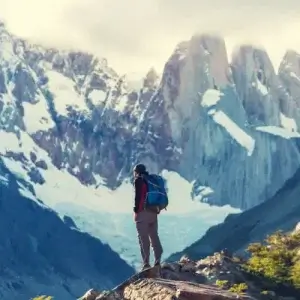Home / Compare Travel Insurance / Adventure travel insuran…

Key takeaways
- Adventure travel insurance can be found as part of certain comprehensive travel insurance policies or as specific adventure add-on cover, which can help financially protect you against medical expenses if you get injured, but it also may cover cancellations, delays and more.
- Different insurers may not cover the same adventure sports, so if you have an activity in mind, always compare policies or add-on cover to see what’s included and excluded.
- If you’re going skiing or snowboarding, you’ll usually need to get snow sports cover instead or in addition to be covered while on the slopes.
What is adventure travel?
Adventure travel (sometimes known as adventure tourism) is for those who like a thrill while on holiday. Adventure travel activities are experiences that may involve more risk and exertion than a regular holiday, but might just create some unforgettable memories to look back on.
Do I need adventure travel insurance?
No matter how experienced you may be in extreme sports, having travel insurance with adventure sports cover can help you prepare for the unexpected. It may not even be an injury or illness; your flight may be cancelled due to bad weather, or you might fall ill before you even leave home.
Adventure activities can be life-changing experiences, but it’s important to acknowledge the risks and prepare for them so that if an accident occurs, you can return to Australia without being thousands of dollars out of pocket. If you’re taking part in a risky activity, it’s particularly important that you have travel insurance cover that includes emergency assistance and medical evacuation and repatriation.
The right travel insurance policy can help you prepare by insuring potential events such as injuries, cancellations, theft and more. You can find the full details of your policy and its benefits, exclusions, limits and sub-limits in the Product Disclosure Statement (PDS).
Expert tips on getting adventure travel insurance for you
A bit of adventure while on holiday can create lifelong memories, which is why it’s important to protect yourself and your trip. Compare the Market’s Executive General Manager of General Insurance, Adrian Taylor, has some tips on helping you get the most out of your adventure travel insurance policy.

Compare adventure sport inclusions between insurers
The cover provided for adventure sports differs significantly between insurers. Some insurers will provide cover automatically, while others will add an extra premium for the additional cover you’re after. Always check the PDS to make sure you have the cover you need.
Consider what cover you need for the rest of your trip
Even a trip full of adventure needs cover for the mundane things like flight cancellations. When searching for policies, cover for medical expenses, cancellation fees and luggage are important to look for, but you might also need rental vehicle excess and specified snow and cruise cover, too. This is particularly important as some insurers won’t cover these things as standard.
Choose licensed operators for adventure sports
When taking part in an adventure activity, use licensed operators whenever possible. Not only can you be more confident in the safety requirements, but some insurers may not accept claims from riskier activities if you weren’t using a licensed operator.
Adventure sports: Inclusions and exclusions
What sports are included in my adventure travel insurance?

Before you go paragliding in Queenstown, New Zealand or snorkelling in Vanuatu, you should consider if you’re covered. No matter your plans, if you want to try out an adventure sport or other hair-raising activity, you should decide on the best insurance policy to suit your needs.
Some insurers include limited cover for adventure sports at no extra cost, while others offer adventure sports cover as an add-on for an additional premium. Some of these adventure activities may include:
- Archery
- Athletics
- Battle re-enactment (without live firearms)
- Bungee jumping
- Boating
- BMX riding (excluding stunts or obstacles)
- Camel or elephant riding
- Clay pigeon shooting
- Deep sea fishing
- Dog sledding
- Go karting
- Gymnastics
- Hiking
- Horse riding
- Hot air ballooning
- Ice skating
- Kayaking or canoeing (depending on the river difficulty rating)
- Martial arts (no contact)
- Motorcycling/scootering (provided you have the correct licence)
- Paintballing
- Quad biking (with a licensed operator)
- Safari trekking (with a licensed operator)
- Skateboarding
- Surfing
- Snorkelling
- Skydiving
- Water skiing
- White water rafting (depending on the river difficulty rating)
- Ziplining
- Zorbing.
Travel insurance for adventure travel will differ between insurers and policies. Some insurers may cover you for some or all of the above, while others may not cover you for any of them. It’s important to find an insurance provider that offers cover for all of your planned overseas activities.
What adventure sports are excluded?
Some activities may not be covered at all under your travel insurance policy, or the insurer may offer coverage as an optional add-on to your policy instead. While these may differ between policies and insurers, here are a couple of activities that may fall under this umbrella:
- Base jumping
- Hang gliding
- Hiking or trekking (on or above 3000m)
- Hunting
- Mountaineering, abseiling and rock climbing
- Mountain biking
- Parachuting
- Parkour
- Professional and contact sport
- Rodeos
- Ski acrobatics
- Wingsuit gliding.
Your insurer may exclude all these activities, or they may exclude none of them. To ensure you’re not barred from doing something you truly have your heart set on, you should look carefully at excluded activities in your PDS.
General exclusions for adventure travel insurance
It’s not just sports and activities that can be excluded, either. Some scenarios and incidents are also usually excluded from cover, including:
- Unlicensed scuba diving. Your policy may not cover you if you’re scuba diving without a license or a properly licensed supervisor.
- Failure to wear headgear. If you weren’t wearing the proper safety gear (like a helmet when riding a motorcycle or moped) at the time of the incident you’re claiming for, your claim might be rejected.
- Intoxication. If you were under the influence of drugs or alcohol when you were injured, your injury and medical expenses might not be covered, even if the injury wasn’t your fault.
- Pre-existing medical conditions. Depending on your health status, your insurer may restrict your ability to claim. Check with them before getting covered to find out whether you can be covered or if you might have to undergo a medical assessment.
More information
What about winter sports?
Winter sports such as skiing or snowboarding are typically not covered under regular travel insurance or adventure cover. Instead, you’ll need to take out ski cover to be covered. This add-on will usually cover winter sports activities, as well as damaged snow sports equipment and injuries that occur on-piste.
Are there certain countries I can’t receive cover for?
Some insurers may not cover travel to, or specific activities in, certain countries, and it’s in these circumstances that you won’t be able to claim. Some extreme sports may not be covered in countries such as the USA or Canada, typically due to the high cost of medical treatment.
Always check the PDS to be certain of what activities are covered, and any conditions or limits that may apply.
Meet our travel insurance expert, Adrian Taylor
As a General Insurance expert with over 13 years’ experience in financial services, Adrian Taylor believes in educating customers about the importance of travel insurance so that anyone can kick back and make the most of their time away from home. While no one wants a disrupted holiday, a suitable travel insurance policy can provide a financial safety net for yourself, your belongings and your trip in case things go wrong.


